Different Types of Beverage Garnish and their preparation
Garnishes are an essential part of any cocktail, not only do they add an aesthetic appeal to the drink, but they can also enhance the flavor profile of the cocktail. There are several types of garnishes that bartenders can use to make their drinks stand out.
One of the most popular types of garnish is citrus. Lemon, lime, and orange are commonly used to add a zesty and refreshing flavor to cocktails. Citrus fruits can be sliced, wedged, or peeled to create different types of garnishes, depending on the drink.
Another type of garnish that is gaining popularity is fresh herbs. Mint, basil, and rosemary are commonly used to add a fragrant aroma and a fresh taste to cocktails. The herbs can be muddled, slapped, or used as a simple sprig to add a pop of color and flavor to the drink.
For those looking to add a bit of heat to their cocktail, spicy garnishes are a great option. Jalapeño, habanero, and chili peppers are commonly used to add a spicy kick to cocktails. They can be sliced, muddled, or used as a garnish to add a bit of heat to the drink.
Finally, there are several other types of garnishes that bartenders can use to add flair to their drinks, including fruit, vegetables, and even candy. Bartenders should experiment with different types of garnishes to find the perfect combination for their cocktails. With a little creativity, the possibilities are endless.
GarnishGarnish - The artistic complementing of a food item with other food or edible item. is used by bartenders for decorating cocktails and mocktails. They need to be properly stored to maintain freshness and to be in good condition.
A few examples of commonly used garnishes in bars are Lemon Wedges, Lime Wedges, Orange ZestZest - The coloured portion of the peel of citrus fruit. Example: Orange Zest; Lemon zest etc., Lemon Spiral, etc.
List of Garnish Used By BartendersFor Decoration Cocktails and Mocktails:
Lemon Wedges
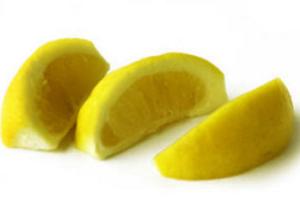
Lemon wedges are small, triangular-shaped segments of a lemon that are typically cut for use in various culinary applications. They are often served as a garnish or accompaniment to enhance the flavor of dishes. Lemon wedges are commonly used in beverages, such as water, iced tea, or cocktails, to add a refreshing citrusy twist. They are also frequently paired with seafood, salads, and grilled meats to provide a burst of acidity and brightness.
Preparing lemon wedges is a simple process. Start by cutting off the ends of the lemon, then slice it in half vertically. Take one of the halves and cut it into thin wedges, ensuring that the seeds are removed. The resulting lemon wedges can be used immediately or stored in the refrigerator for later use.
The versatility of lemon wedges makes them a popular addition to many dishes, contributing not only flavor but also a visually appealing touch.
- Cut the ends from a lemon.
- Cut the lemon in half lengthways.
- Cut each half into three or four pieces lengthways.
- Trim the inside core of the lemon wedge to remove piths & seeds.
Lime Wedges
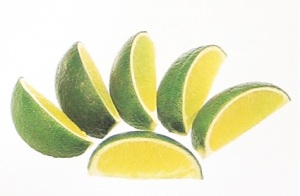
Lime wedges are similar to lemon wedges but are made from limes, a citrus fruit known for its tart and slightly sweet flavor. Like lemon wedges, lime wedges are often used as a garnish or accompaniment to enhance the taste of various dishes and beverages.
To prepare lime wedges, start by cutting off the ends of the lime. Then, slice the lime in half vertically. Take one of the halves and cut it into thin wedges, making sure to remove any seeds. Lime wedges are commonly used in cocktails, such as margaritas and mojitos, to add a zesty kick. They are also popular in dishes like ceviche, fish tacos, and salads.
Lime wedges can be used in both sweet and savory recipes, providing a burst of citrus flavor. They are particularly refreshing and can be squeezed over dishes to add acidity and brightness. Lime wedges are a versatile ingredient that adds a pop of flavor to a wide range of culinary creations.
- Cut the ends from a lime.
- Cut the lime in half lengthways.
- Cut each half into three or four pieces lengthways.
- Trim the inside core of the lime wedge to remove piths & seeds.
Lemon Zest
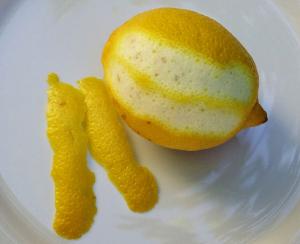
Lemon zest is a versatile ingredient that can be used in various ways in a bar setting to enhance the flavor and aroma of cocktails. Here are some common uses of lemon zest in a bar:
- Garnish for Cocktails: Lemon zest is often used as a garnish for cocktails. Bartenders can express the oils from the zest by giving it a twist over the drink, releasing the citrusy aroma and adding a burst of flavor.
- Citrus Twist: Lemon zest twists can be used to add a decorative and aromatic touch to cocktails. A twist of lemon zest can be placed on the rim of a glass or floated on top of the drink.
- Zest for Rimming Glasses: Lemon zest can be used to rim the edges of glasses, especially for cocktails like Margaritas. To do this, moisten the rim of the glass with a lemon wedge and then dip it into sugar or salt mixed with lemon zest.
- Infusing Spirits: Lemon zest can be used to infuse spirits, creating lemon-infused vodka, gin, or other spirits. This adds a subtle citrus flavor to the base spirit, providing a unique twist to cocktails.
- Lemon Zest Syrup: Bartenders can make a simple syrup infused with lemon zest to add sweetness and citrus flavor to cocktails. This syrup can be used in various mixed drinks.
- Twisted Peels in Shakers: Bartenders often add twists of lemon zest directly into shakers with other ingredients when preparing cocktails. The twisting motion helps release the essential oils, enhancing the drink’s flavor.
When using lemon zest in a bar setting, it’s essential to use fresh, high-quality lemons for the best flavor. The zest should be carefully peeled to avoid the bitter white pith, focusing on the aromatic outer layer. The versatility of lemon zest allows bartenders to experiment and create unique and flavorful cocktails.
- Cut the lemon in half at its widest point.
- Place the lemon on the board with the lemon nub facing up.
- Cut the peel from the fruit into four or five sections, blade down.
- For Flaming or zesting keep the white pith.
- For a classic ‘twist’ remove the white pith.
Orange Zest
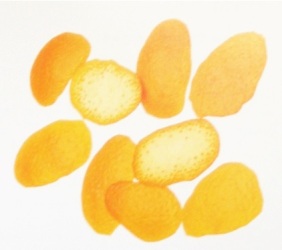
Orange zest plays a crucial role in the world of cocktails, adding a vibrant citrus aroma and flavor to drinks. Here are several ways orange zest is used in bars:
- Garnish for Cocktails: Bartenders often use a twist of orange zest as a garnish for cocktails. Expressing the oils from the zest by giving it a twist over the drink adds a burst of citrus aroma, enhancing the overall drinking experience.
- Orange Zest Spritz: Some bartenders spritz the oils from orange zest over the surface of a cocktail using a small citrus spritzer or by pinching the twist over the drink. This technique releases the aromatic oils and contributes to the cocktail’s fragrance.
- Rimming Glasses: Orange zest can be used to rim the edges of glasses for certain cocktails, similar to the way salt or sugar is used. Wet the rim with an orange wedge and dip it into sugar or a mixture of sugar and orange zest for a flavorful rim.
- Flavoring Syrups: Orange zest can be used to infuse simple syrups or other cocktail syrups. This orange-infused syrup can then be used to sweeten various drinks, imparting a citrusy sweetness.
- Citrus Twists in Shakers: Bartenders often add twists of orange zest directly into shakers along with other cocktail ingredients. The twisting motion helps release the essential oils, infusing the drink with a bright citrus flavor.
- Orange Zest as a Muddled Ingredient: In some cocktails, bartenders may muddle orange zest along with other ingredients to extract additional citrus flavors. This technique is common in drinks where the essence of the citrus oil is desired.
- Infused Spirits: Orange zest can be used to infuse spirits, creating orange-infused vodka, gin, or other bases for cocktails. This adds a layer of citrus complexity to the spirit.
Whether it’s in classic cocktails like an Old Fashioned or a Negroni, or in more modern concoctions, orange zest is a versatile and widely used ingredient in the bar that can elevate the sensory experience of a drink. The aromatic oils from orange zest provide a delightful and refreshing note to a variety of cocktails.
- Cut the orange in half at its widest point.
- Place the orange on the board with the lemon nub facing up.
- Cut the peel from the fruit into four or five sections, blade down.
- For Flaming or zesting keep the white pith.
- For a classic ‘twist’ remove the white pith.
Lemon Spiral
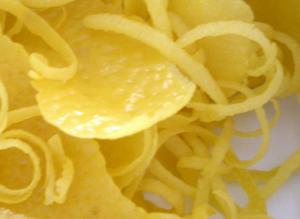
A lemon spiral is a decorative and aromatic garnish commonly used in bars to enhance the presentation and flavor of cocktails. Here’s how you can create a lemon spiral for use in a bar setting:
Tools and Ingredients:
- Fresh lemon
- Channel knife or vegetable peeler
- Cutting board
Steps:
- Select a Fresh Lemon:
- Choose a fresh and firm lemon for the best results. Make sure it has a smooth surface and is free of blemishes.
- WashWash - 1) Brushing or coating a food item with a liquid such as egg white; milk or egg wash. 2) The ... the Lemon:
- Rinse the lemon under cold water to remove any dirt or residues.
- Prepare the Lemon:
- Cut off the ends of the lemon so that you have flat surfaces to work with.
- Use a Channel Knife or Vegetable Peeler:
- A channel knife is a specialized tool designed for creating decorative spirals and twists. If you don’t have a channel knife, a vegetable peeler can also be used.
- Start Spiraling:
- Hold the lemon firmly on the cutting board.
- If using a channel knife, press it gently into the lemon’s skin at one end and rotate the lemon while keeping the knife in place. This will create a continuous spiral of lemon peel.
- If using a vegetable peeler, press it against the lemon’s skin and carefully peel away thin strips in a spiral pattern.
- Adjust Thickness:
- Depending on your preference and the cocktail you’re garnishing, you can adjust the thickness of the spiral. Thinner spirals may be more delicate and visually appealing, while thicker ones release more citrus oil when twisted.
- Complete the Spiral:
- Continue spiraling until you reach the other end of the lemon or until you have the desired length of the spiral.
- Use as Garnish:
- Once you have the lemon spiral, it can be used as a garnish for various cocktails. Twist it over the drink to release the citrus oils, enhancing the aroma and flavor.
Lemon spirals are often used to adorn classic cocktails like a Tom Collins or a Gin and Tonic. They add a visually appealing and aromatic element to the drink, contributing to the overall sensory experience for the person enjoying the cocktail.
- Remove the ends from the fruit, and hold the fruit lengthways.
- Using a canalle knife, or channel knife, carefully cut from the pole farthest from you in a straight line towards the pole closet to you for about ¼”.
- Turn the blade sharply to the left and cut in a downward spiral, leaving a ½” strip of peel on the fruit.
- End the cut as you begin with a sharp twist and straight line.
Lime Quarters
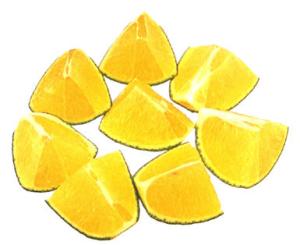
Lime quarters are a common and practical way to use lime as a garnish in a bar setting. They are often employed to add a burst of citrus flavor and visual appeal to various cocktails. Here’s how you can prepare lime quarters for use in a bar:
Tools and Ingredients:
- Fresh limes
- Sharp knife
- Cutting board
Steps:
- Select Fresh Limes:
- Choose fresh and firm limes for the best results. Ensure that the limes are free of blemishes and have a smooth surface.
- Wash the Limes:
- Rinse the limes under cold water to remove any dirt or residues.
- Cut Off the Ends:
- Using a sharp knife, cut off both ends of the lime to create flat surfaces.
- Cut the Lime in Half:
- Cut the lime in half vertically, creating two equal-sized hemispheres.
- Quarter the Halves:
- Take each lime half and cut it again vertically, resulting in quarters. This will give you four smaller wedges from each lime.
- Remove Seeds if Necessary:
- If your limes have seeds, use the tip of the knife to remove them from the quarters.
- Arrange for Serving:
- Arrange the lime quarters in a way that makes them easily accessible for garnishing cocktails.
- Garnish Cocktails:
- Use the lime quarters as a garnish for various cocktails. They can be placed on the rim of the glass, floated on top of the drink, or squeezed into the beverage for an extra burst of citrus flavor.
Lime quarters are particularly popular in drinks like Margaritas, Mojitos, and many tropical cocktails. They not only enhance the flavor but also contribute to the visual appeal of the drink. Lime quarters can be prepared in advance and stored in a way that keeps them fresh until they are needed in the bar.
- Cut the ends from the fruit.
- Cut in half sideways.
- Place the two halves flat side down.
- Cut each piece into 4 pieces.
Pineapple Pieces
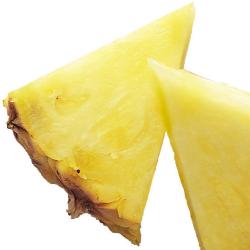
Pineapple pieces are a versatile and tropical garnish commonly used in bars to add sweetness, acidity, and visual appeal to a variety of cocktails. Here’s how you can prepare pineapple pieces for use in a bar setting:
Tools and Ingredients:
- Fresh pineapple
- Chef’s knife
- Cutting board
Steps:
- Select a Ripe Pineapple:
- Choose a fresh and ripe pineapple. Look for a pineapple with a sweet aroma and vibrant green leaves. The skin should be firm with a slight give when pressed.
- Wash the Pineapple:
- Rinse the pineapple under cold water to remove any dirt or residues.
- Prepare the Pineapple:
- Cut off the crown (leafy top) and the base of the pineapple to create stable, flat surfaces.
- Peel the Pineapple:
- Stand the pineapple upright and carefully cut off the skin, following the contour of the fruit. Make sure to remove any “eyes” or brown spots.
- Quarter the Pineapple:
- Cut the peeled pineapple into quarters lengthwise.
- Remove the Core:
- Cut out the tough and fibrous core from each pineapple quarter. You can do this by making a diagonal cut along the edge of the core.
- Slice into Pieces:
- Take each pineapple quarter and slice it into bite-sized pieces. You can adjust the size based on your preference and the type of cocktail you’re garnishing.
- Serve or Store:
- Arrange the pineapple pieces for immediate use as a garnish in the bar. If you’re preparing in advance, store the pineapple pieces in an airtight container in the refrigerator.
- Garnish Cocktails:
- Use the pineapple pieces as a garnish for various cocktails. They can be added to tropical drinks, such as Piña Coladas, Mai Tais, or simply served as a side garnish for other beverages.
Pineapple pieces add a tropical and refreshing element to cocktails, providing a burst of natural sweetness and acidity. They can be used creatively in both alcoholic and non-alcoholic drinks to enhance the overall flavor profile and presentation.
- Cut off the rind and both ends.
- Cut 1” slices crossways to make wheels.
- Cut each wheel into 8 pieces.
- Trim the core from the pieces.
Watermelon Chunks
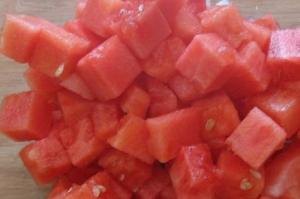
Watermelon chunks can be a delightful and refreshing addition to cocktails in a bar setting. Here’s a guide on how to prepare watermelon chunks for use in the bar:
Tools and Ingredients:
- Fresh watermelon
- Chef’s knife
- Cutting board
Steps:
- Select a Ripe Watermelon:
- Choose a fresh and ripe watermelon. Look for a watermelon that feels heavy for its size, has a uniform shape, and has a deep, hollow sound when tapped.
- Wash the Watermelon:
- Rinse the watermelon under cold water to remove any dirt or residues.
- Prepare the Watermelon:
- Cut off both ends of the watermelon to create stable, flat surfaces.
- Cut the Watermelon in Half:
- Place the watermelon on one of the flat ends and cut it in half vertically.
- Slice into Wedges:
- Take one of the watermelon halves and slice it into wedges. Adjust the size of the wedges based on your preference and the type of cocktail you’re preparing.
- Remove Seeds if Necessary:
- If the watermelon has seeds, use a spoon or knife to remove them from the chunks.
- Cut into Bite-Sized Chunks:
- Take each watermelon wedge and cut it into bite-sized chunks. This makes it easier to handle and garnish cocktails.
- Serve or Store:
- Arrange the watermelon chunks for immediate use as a garnish in the bar. If you’re preparing in advance, store the chunks in an airtight container in the refrigerator.
- Garnish Cocktails:
- Use the watermelon chunks as a garnish for various cocktails. They pair well with drinks like watermelon mojitos, sangrias, or other refreshing summer cocktails.
Watermelon chunks add a juicy and hydrating element to cocktails, bringing a touch of sweetness and vibrant color. They are especially popular in warm-weather drinks, contributing to a light and refreshing profile. Consider experimenting with watermelon chunks in both alcoholic and non-alcoholic beverages to enhance the overall drinking experience.
- Trim the Watermelon into a cube.
- Cut the cube into 2” slices.
- Cut the Slices into 2” cubes.
Horses Neck
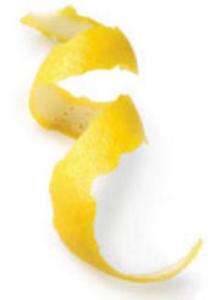
The Horse’s Neck is a classic cocktail garnish that involves creating a long, spiraled lemon peel to hang over the edge of a glass. This garnish is not only visually appealing but also adds a hint of citrus aroma to the drink. Here’s how you can cut a spiral from a lemon for a Horse’s Neck garnish:
Tools and Ingredients:
- Fresh lemon
- Channel knife or vegetable peeler
- Cutting board
Steps:
- Select a Fresh Lemon:
- Choose a fresh and firm lemon with a smooth surface. OrganicOrganic refers to agricultural products that are grown using cultural; biological and mechanical met... lemons are preferable, especially if you plan to use the peel.
- Wash the Lemon:
- Rinse the lemon under cold water to remove any dirt or residues.
- Cut Off the Ends:
- Using a sharp knife, cut off both ends of the lemon to create flat surfaces.
- Use a Channel Knife or Vegetable Peeler:
- A channel knife is a specialized tool designed for creating decorative spirals and twists. If you don’t have a channel knife, a vegetable peeler can also be used.
- Start Spiraling:
- If using a channel knife, press it gently into the lemon’s skin at one end and rotate the lemon while keeping the knife in place. This will create a continuous spiral of lemon peel.
- If using a vegetable peeler, press it against the lemon’s skin and carefully peel away thin strips in a spiral pattern.
- Adjust Thickness:
- Depending on your preference, you can adjust the thickness of the spiral. Thinner spirals may be more delicate and visually appealing.
- Complete the Spiral:
- Continue spiraling until you reach the other end of the lemon or until you have the desired length of the spiral.
- Use as a Horse’s Neck Garnish:
- Hang the lemon spiral over the edge of the glass, allowing it to drape into the drink. This garnish is often used in classic cocktails like the Horse’s Neck with a Twist.
The Horse’s Neck garnish not only looks elegant but also adds a touch of citrus essence to the beverage. It’s a classic and simple way to elevate the presentation of your cocktails.
After cutting a spiral from a lemon, the remaining ½” wide spiral on the fruit can be carefully cut from the orange using a paring knife to make a ‘horse’s neck’.
Fruit Slices
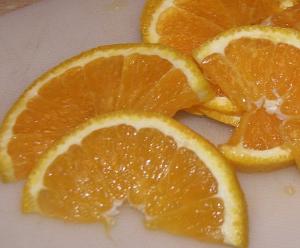
Sliced fruits are commonly used in bars to garnish cocktails, adding both visual appeal and flavour to the drinks. Here’s a general guide on how to prepare fruit slices for use in a bar setting:
Tools and Ingredients:
- Various fruits (e.g., oranges, lemons, limes, berries)
- Sharp knife
- Cutting board
Steps:
- Select Fresh Fruits:
- Choose a variety of fresh fruits that complement the flavors of your cocktails. Common choices include oranges, lemons, limes, and berries.
- Wash the Fruits:
- Rinse the fruits under cold water to remove any dirt or residues.
- Cut Off the Ends:
- Using a sharp knife, cut off both ends of the fruit to create stable, flat surfaces.
- Slice the Fruits:
- Depending on the fruit and the cocktail, slice the fruits into rounds or wedges. Adjust the thickness based on your preference and the type of drink you’re garnishing.
- Remove Seeds if Necessary:
- If the fruits have seeds, such as citrus fruits, use a knife to carefully remove them from the slices.
- Serve or Store:
- Arrange the fruit slices for immediate use as garnishes in the bar. If you’re preparing in advance, store the slices in an airtight container in the refrigerator.
- Garnish Cocktails:
- Use the fruit slices as garnishes for various cocktails. They can be placed on the rim of the glass, floated on top of the drink, or arranged decoratively within the beverage.
Specific Fruit Garnishing Ideas:
- Citrus Wheels: Create round slices from oranges, lemons, or limes to float on the surface of drinks like sangrias or cocktails.
- Citrus Wedges: Cut citrus fruits into wedges for a classic garnish on the rim of glasses, such as with Margaritas or other sour cocktails.
- Berries: Strawberries, raspberries, or blueberries can be used individually or threaded onto cocktail picks for a colorful and flavorful garnish.
- Pineapple Wedges: Slice pineapple into wedges for tropical drinks or cocktails like Piña Coladas.
- Melon Slices: Watermelon, cantaloupe, or honeydew slices can add a refreshing touch to summer cocktails.
Remember to consider the flavor profiles of the fruits and how they complement the specific cocktails you are preparing. Fresh fruit slices not only enhance the appearance of the drink but also contribute natural sweetness and aroma to the overall drinking experience.
- Cut the ends from the fruit.
- Cut the fruit in half lengthways.
- Place both halves flat-side down on the board.
- Cut 1/8” slices crossways to form a crescent.
- Trim the inside of the fruit slice to remove pith & seeds.
Other Necessary Items Used in The BAR
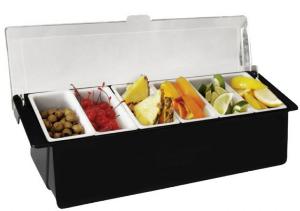
In addition to fruits and garnishes, a well-equipped bar requires a variety of tools, glassware, and other essential items to facilitate the preparation of cocktails and beverages. Here’s a list of other necessary items commonly used in a bar:
Bar Tools:
- Shaker SetSet: Allowing an item to go from a soft or liquid state to a firmer more solid state.:
- Boston shaker or cobbler shaker for mixing and shaking cocktails.
- Jigger:
- A measuring tool with two sides used for accurate measurement of spirits and other ingredients.
- Strainer:
- Hawthorne strainer or fine-mesh strainer for separating ice or other ingredients from the liquid when pouring.
- Bar Spoon:
- A long-handled spoon used for stirring and layering drinks.
- Muddler:
- Used for muddling ingredients such as fruits, herbs, or sugar to extract flavors.
- Citrus Squeezer or Juicer:
- For efficiently extracting fresh juice from citrus fruits.
- Channel Knife or Zester:
- For creating twists or peels from citrus fruits for garnishes.
- Ice Bucket and Tongs:
- For storing and serving ice.
- Bar Mat:
- Rubber mat placed on the bar to provide a non-slip surface and catch spills.
- Cutting Board and Knife:
- Essential for cutting fruits, garnishes, and other ingredients.
Glassware:
- Highball Glasses:
- Tall glasses used for drinks like highballs and Collins.
- Lowball Glasses:
- Shorter glasses used for drinks like Old Fashioneds and whiskey cocktails.
- Martini Glasses:
- Conical glasses used for serving martinis and other cocktails.
- Shot Glasses:
- Small glasses for measuring and serving shots of spirits.
- Wine Glasses:
- Various types for serving wine or wine-based cocktails.
- Margarita Glasses:
- Typically with a wide, shallow bowl for serving margaritas.
Miscellaneous:
- Bar Towels:
- Absorbent towels for wiping surfaces and cleaning glassware.
- Coasters:
- To protect surfaces from glassware.
- Cocktail Picks:
- Used for garnishing and serving small bites.
- Condiment Dispensers:
- Containers for holding and dispensing garnishes like olives or cherries.
- Straws:
- Various types, including reusable and biodegradable options.
- Napkins:
- For serving and cleaning.
- Corkscrew or Wine Opener:
- For opening bottles of wine.
- Bottle Opener:
- For opening capped bottles, especially beer bottles.
- Trash Bin:
- To dispose of waste and keep the bar area clean.
Other Garnishes
- Slice – Lemon, Lime, Orange.
- Twist – Lemon, Orange.
- The above-cut garnishes have to be kept in a garnish rack with a cover.
- Berries – Strawberry, Blueberry, Raspberry.
- Can Fruit –Red cherry, Green Cherry, Peach, Green Olives, Onion.
- Others – Mint Leave, cinnamon sticks.
Having a well-stocked bar with these essential items ensures that bartenders can efficiently create a wide range of cocktails while maintaining a clean and organized workspace.











